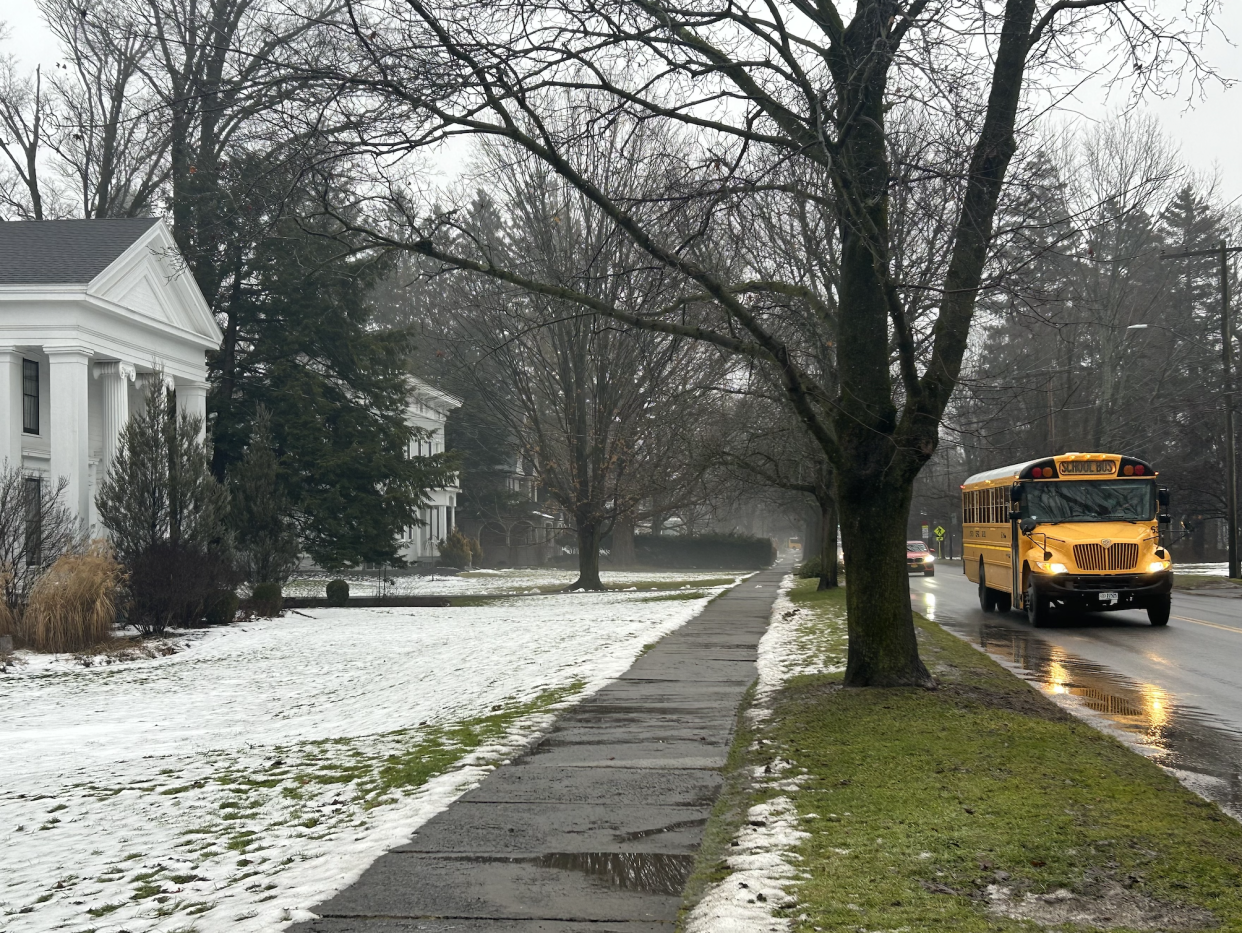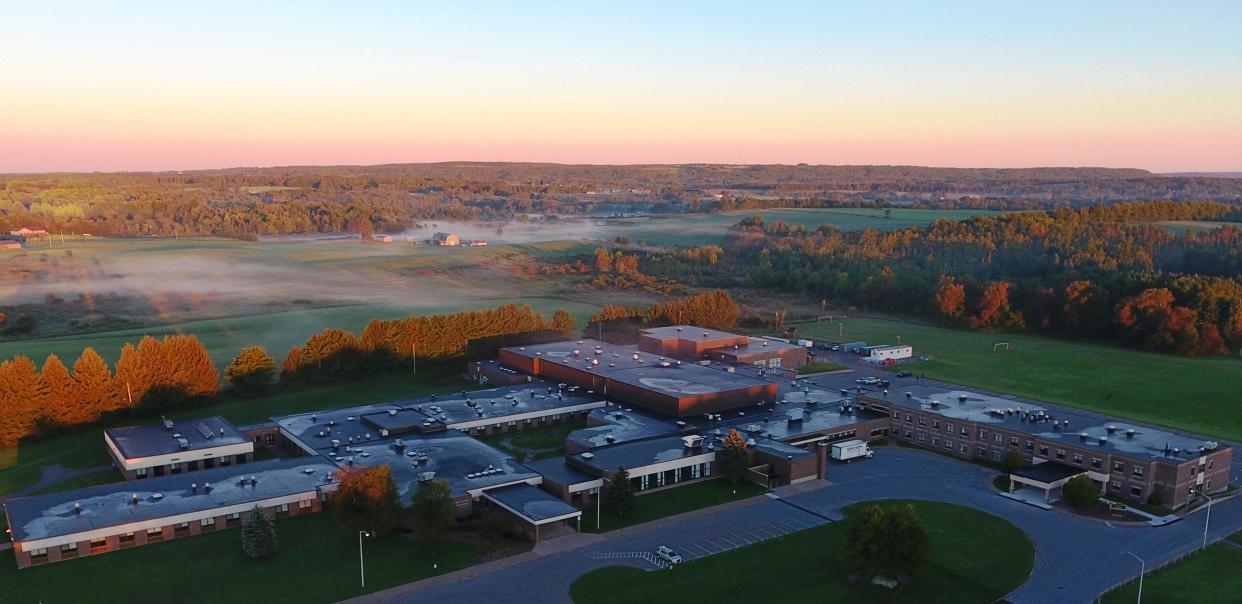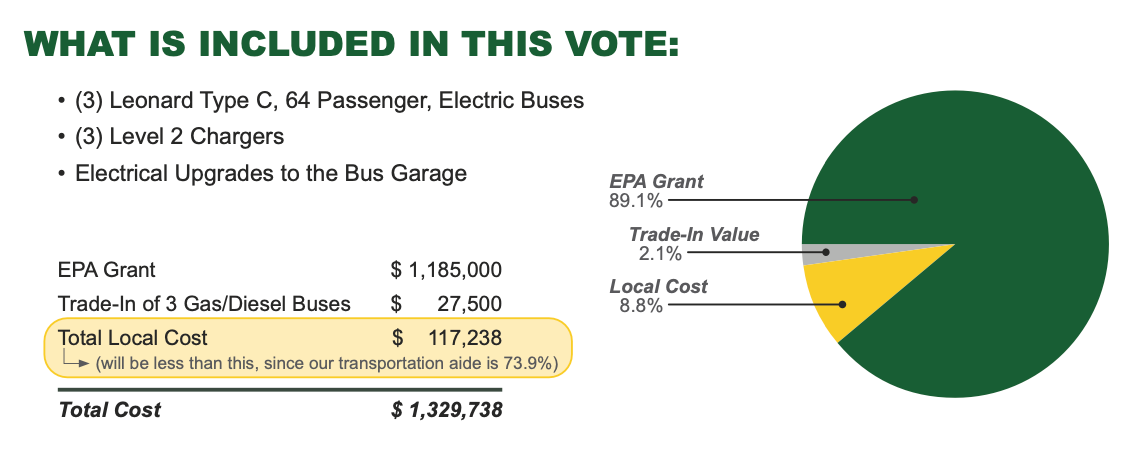New York is preparing for surge of electric vehicles. What do residents think of the push?
Earlier this month, U.S. Senate Majority Leader Chuck Schumer secured more than $700,000 in federal funding to help install an estimated 41 electrical vehicle (EV) charging stations across Oneida County. Schumer said his goal is to have every car manufactured be electric by 2030 and every car on the road be clean by 2040.
But, critics are skeptical.
School officials say the buzz regarding local EV infrastructure has shed light on the state’s push for zero-emission buses by 2035.
Thirteen districts across the Mohawk Valley are currently working to ascertain the feasibility of EV bussing. But some, more than others, are battling against community pushback.
“We’re stuck in limbo, just waiting to see what'll happen next,” said Clinton Central School District Bus Dispatcher Frank Tizzano.

EV infrastructure
According to Schumer, the federal investment to install EV charging stations will help accelerate the transition to clean energy in the Mohawk Valley.
The funding comes from the U.S. Department of Transportation’s (DOT) Charging and Fueling Infrastructure Grant Program, which the senator created in the Bipartisan Infrastructure Investment & Jobs Act.
Schumer said the project will support the growing demand for electric vehicle use, lower air pollution, and reduce the overall environmental footprint of Oneida County by increasing the availability of charging stations in areas where demand is high, but sufficient charging capabilities may not yet exist.
“Electric vehicles are booming in popularity, and for this industry to succeed we need to make it so charging your car is as easy and convenient as filling up a gas tank,” Schumer said in a statement. “Oneida County is leading the way to build out our nation’s network of EV chargers, supercharging the fight against climate change and helping pave the road to a cleaner electric future.”
The grant will fund the installation of 41 Level 2 EV charging stations at nine locations across Utica, Rome and Whitestown, including plans for stations at the Utica University Nexus Center, the Oneida County Parking Garage in downtown Utica, the Boehlert Transportation Center at Union Station, the Cornell Cooperative Extension in Whitestown, and the Oneida County Social Services Building in Rome, and more.
Schumer said that the project will provide affordable, reliable, accessible, and safe EV charging options for locals and travelers while simultaneously encouraging economic growth in areas of persistent poverty and historically disadvantaged communities, with at least 85% of the funding slated to benefit designated disadvantaged communities.
“This grant will provide a major boost to Oneida County’s EV infrastructure and help meet growing demand," said Oneida County Executive Anthony J. Picente Jr. in a statement "Adding over 40 charging stations to nine county and state-owned locations across Utica, Rome, and Whitestown will give our community a more robust network to support the needs of our residents and draw in visitors.”
Zero-emission busing
Tizzano regarded the strides taken in establishing local EV charging stations as part of a greater whole. New York mandates that by 2027, new school buses have to be zero-emissions; and by 2035, the school bus fleet statewide should be entirely electric, he said.
Last fall Gov. Kathy Hochul made $100 million available through the New York State Energy Research Development Authority to help school bus fleet operators purchase zero-emission vehicles.
“Ensuring electric school buses are at the forefront of student transport is a critical health investment and demonstrates the benefits of clean energy while reducing harmful emissions to improve air quality and protect our precious environment,” Hochul said, in a statement.
The catch? While electric vehicles tend to have lower fuel costs they are less efficient in cold weather, local bus fleet coordinators say they aren’t “aren’t conducive to upstate New York’s winters.”
Each new electric bus could cost up to $400,000.
Camden Central School District Director of Transportation Andy Thompson, said the district supplies over 50 vehicles.
“The latest buses we’ve bought cost $150,000 – and those meet the EPA’s standards for lower emissions,” said Thompson. “That's nearly a quarter of the cost of a single renewable bus. The change that’s expected is too much too soon.”

Erring on the side of caution
The Oneida-Herkimer-Madison (OHM) BOCES region serves Brookfield, Clinton, Holland Patent, New Hartford, New York Mills, Oriskany, Remson, Sauquoit Valley, Utica, Waterville, Westmoreland, and Whitesboro.
According to OHM BOCES officials, their component school districts are currently working to ascertain the feasibility of electric vehicle bussing, including anticipated expenses for buses and charging stations, EV bus capabilities, electrical grid capacity, impact on existing bus routes and other infrastructure considerations.
Unlike other municipalities across the state – such as Albany and Rochester – no electronic buses in the Mohawk Valley have been ordered at this time.
Camden Central School District recently acquired two EV chargers and is looking to purchase hybrid electric vehicles.
“Since the cold weather reduces EV battery capacity, smaller hybrid vans seem to be a viable option,” said Thompson. “Take for instance a 7-passenger hybrid van. After 30 miles the EV battery would get exhausted and you’d need a gas engine would kick in.”
Thompson hinted that the EPA opens a grant program at the end of October, which could present a “next step.”

Local pushback
The Adirondack Central School District was the first in the region to receive an EPA grant. The grant nearly covered the full cost of three electric buses and infrastructure upgrades, but Superintendent Kristy McGrath said it didn't pass public approval.
In 2022, Adirondack applied for an EPA grant to electrify 10% of their bus fleet; 3 out of their 30 total. Upon approval the grant awarded the district $1,185,00 million, the remaining cost came to $30,000.
On Oct. 11, a public hearing was held and 60% of the community voted against the integration of EV buses.
“One hundred sixty-seven constituents voted yes and 248 voted no,” said McGrath. “Without public approval, we were rescinded the awarded grant. Now, our district is at a standstill.”
The New York State Energy Research and Development Authority's (NYSERDA) FlexTech program allows priority districts to have a comprehensive EV Fleet Transition Plan developed, free of cost. Provided Adirondack’s eligibility the Board of Education recently approved the free study with Cornice Technology, McGrath said.
The full Fleet Transition Plan will include a vehicle energy study, an initial depot review for overhead power capacity, a charging concept and layout phasing plan– including cost estimates, and a safety integration report.
McGrath said the deliverables from that plan will be used to implement an electric school bus program.
This article originally appeared on Observer-Dispatch: New York adds EV charging stations to speed transition to clean energy
